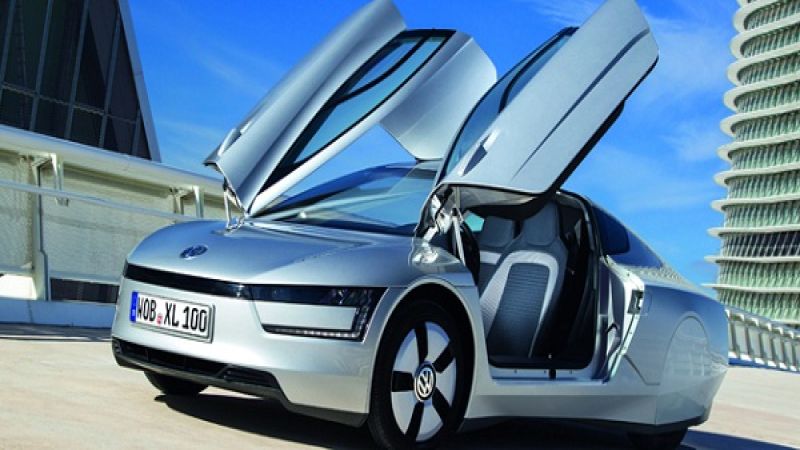The Volkswagen XL1 has finally made it into the hands of a paying customer. Dr. Christian Malorny of Berlin, Germany was the first to be handed the keys to the super-hybrid at Volkswagen’s Transparent Factory in Dresden. He will be one of only 250 customers to receive the coveted vehicle.
"The XL1 has inspired me from the beginning and I am very pleased to now be driving my own," said Malorny with translation (via Autoblog). "With its visionary design and high-tech appearance, Volkswagen has dared something new and innovative."
Daring innovation in fuel efficiency
When Volkswagen set out to design the XL1, they had no intentions of either making money or selling significant volumes of the car. What the company intended was to make a statement, and it certainly accomplished that goal with a car that is capable of achieving an eye-popping 261 miles per gallon.
No, that is not a misprint. The European test cycle is friendlier to MPG numbers than EPA cycles, but 261 miles per gallon even on the European cycle is nothing short of phenomenal.
A car can only reach that kind of efficiency if each component is designed to squeeze every last meter out of a liter of fuel. The laundry list of fuel-saving characteristics reads as follows:
- Plug-in hybrid with 5.5 kWh 160-pound battery pack, 31 miles electric range
- Two-cylinder 47-hp 800cc turbocharged diesel engine coupled with 27-hp electric motor
- Carbon fiber reinforced plastic and aluminum body for 1,753 pound curb weight
- Drag coefficient of 0.189 (for sake of comparison, subcompacts average around 0.30)
- 45.4 inches in height, 65.6 inches wide
- 3-inch ground clearance
- DSG 7-speed automatic transmission with magnesium housing
- Polycarbonate side windows
- 0.004-inch coat of paint
- Front tires: 4.5-inches wide, inflated to 44 psi
All of these features enable the XL1 to cut through the air with as little energy as possible. The car is so light and aerodynamically slippery it only requires about 8 horsepower to cruise at a steady 60 MPH. Mass, rolling resistance, and aerodynamics have all been optimized to the limit, and since the vehicle requires very little power it can use a miniscule, super-efficient engine coupled with the power of electricity. It still is capable of reaching 99 MPH and can ‘sprint’ from 0-60 in just over 12 seconds.
Not practical for the masses, but it is not supposed to be
We should point out that this technological marvel will set you back over $140,000, and it is only being sold in Europe in very limited numbers. It is not a design intended to be practical for the average driver; it is intended to make a statement about fuel efficiency and prove that it is quite possible to achieve extraordinary efficiency using today’s technology.
To be sure, achieving 261 miles per gallon currently requires methods that are highly expensive and ill-suited for large volumes, not to mention the inherent difficulties owning a car that only seats two, rides three inches off the ground, and has barely over four cubic feet of cargo space. But that isn’t the point. The XL1 has proved that maximizing efficiency is about optimizing a whole lot of fuel-saving measures.
Automakers generally are not thrilled that they will be forced to achieve a fleet average of 54.5 MPG by 2025. Volkswagen, however, stepped up and scoffed at that number on its way north of 200 MPG. No, the XL1 isn’t for everyone. But we will begin to see its various attributes appearing in some form more and more frequently on the cars we all drive every day, and that is something to be excited about.











